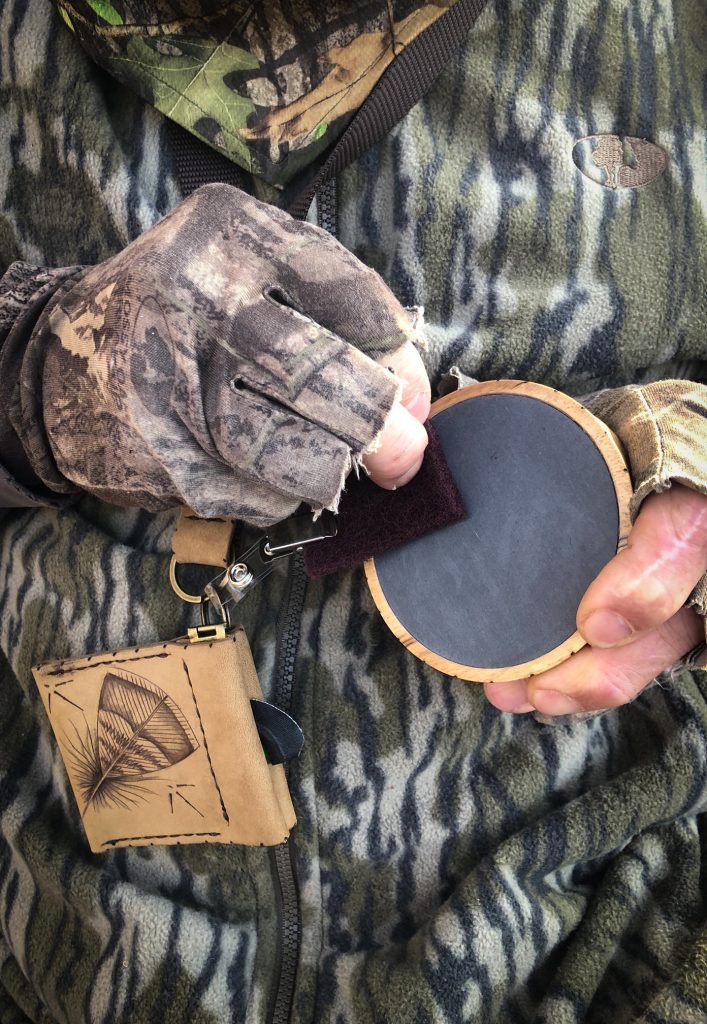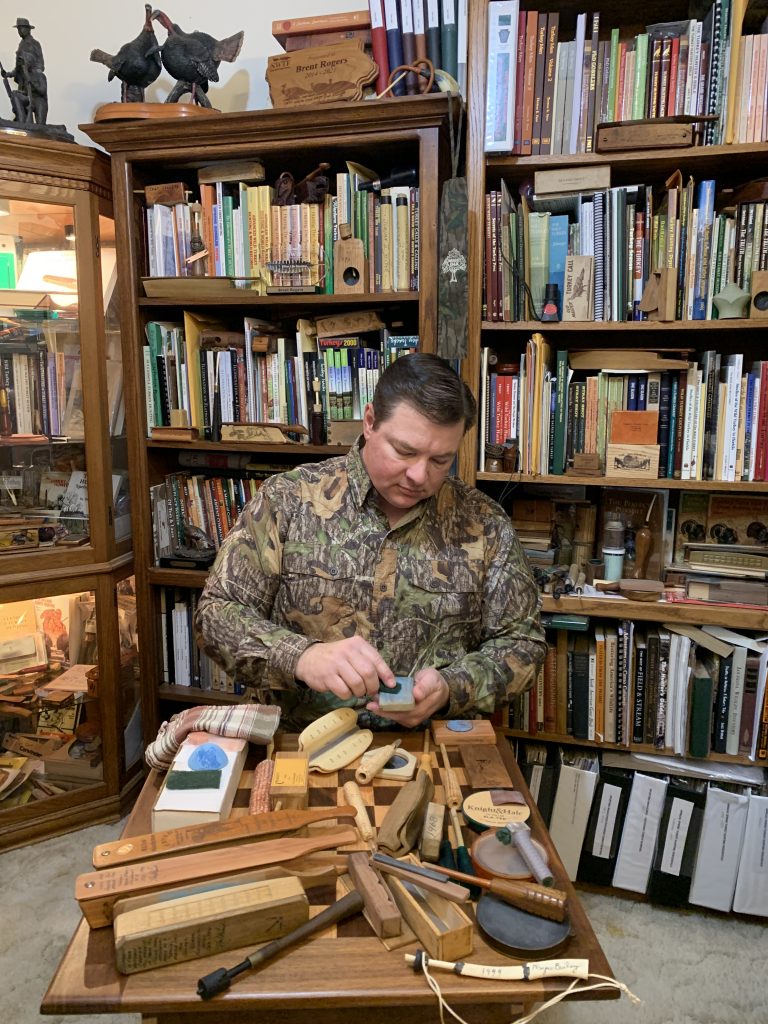Turkey Call Care
Tips for protecting and conditioning your calls while hunting and in the off-season.
To new turkey hunters, even some schooled in our tradition, taking care of calls can be a bit mystifying.

Storing Calls
Timothy Oldham Jr., Grand National Callmaking Competition Call Maker of the Year and Earl Mickel Award winner, likes to keep his turkey calls in a temperature-controlled environment during the offseason.
“I also store my calls in leather cases to protect them and keep them in good working condition,” Oldham Jr. said. “While hunting, I carry conditioning products in a pinch pocket on a neck lanyard for easy access.”
The Indiana call maker’s wife Mindy, hand sews his leather pinch pockets and lanyards, and he adds some signature turkey tracks to give it a unique touch. Conditioning products include Scotch-Brite, a conditioning stone, 120-grit sandpaper and box call chalk.
Collectible Care
An enthusiastic spring and fall hunter, Brent Rogers is an avid collector of turkey hunting calls, old and new.
“For boxes I insert a piece of tissue or soft cloth between box and paddle,” Rogers said. “I mildly clean new collectible calls when I receive them, as they can be pretty well used and abused.” Rogers said less is more for call quality and longevity as conditioning goes — unless it’s a very old call with degradation (like a Lynch box losing its glue).
“I have received boxes that look like they were dipped in a vat of chalk dust,” he said, “as well as pot call surfaces looking like they were put on a grinder.”
The Iowa-based call collector removes excess chalk, oils and dirt with a little water or rubbing alcohol.
“If the call maker is living, I always consult before deciding how to condition,” he said. For his hunting calls, he plays them during the off-season, too, conditioning only as needed.

Return to Service
“I like to honor call makers by making memories with their calls, which is what they were designed to do,” Rogers said. He’s cautious when using older calls, ensuring they are well-packed for a trip to the woods.
“For collectible box calls and wind instruments, I put a call inside a sock or felt bag, and then carry it in a stiff tube with plastic endcaps,” he said. “Drink Koozies make great pot and trough call protectors and reduce any rattling against other items.
“Keeping calls clean is the best way I know to avoid having to condition frequently.”

Mouth Diaphragm TLC
Wash mouth diaphragms with warm water to remove latex residue from new calls. After, soak in a solution of one part mouthwash, one part water before rinsing again. Pat dry. Do this throughout the season, and before storing.
A flat-tipped toothpick, gently run between the reeds to clean them, helps maintain call quality. Careful not to tear the latex.
Keep your mouth calls in a plastic case or bag in the refrigerator. This cool, dark environment keeps reeds tight, providing optimum sound. Diaphragm latex can expand, lose pliability and create too much vibration if not properly stored.
CONNECT WITH US
National Wild Turkey Federation
770 Augusta Road, Edgefield, SC 29824
(800) 843-6983
National Wild Turkey Federation. All rights reserved.
